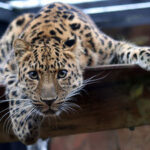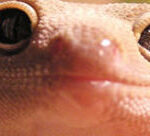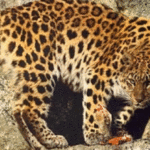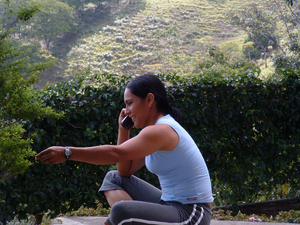What exactly is a Bengal cat? The first interesting fact you should know is that the domestic Bengal house cat is not a descendant of the Bengal Tiger. The Bengal cat is actually a descendant of the Asian Leopard Cat. For the Bengal cat to be a recognized domestic cat it must be at least an F4 in descent. This is defined as the fourth generation of breeding. The first generation is an Asian Leopard Cat and a domestic cat. From there an F2 is the offspring of a Bengal to Bengal and so on until they have reached the fourth generation away from the wild cat.
The domestic Bengal cat can have many different colorings or markings depending on it’s breed line but most share a feature unique to Bengal’s, glitter. Glitter is defined as a hollow air shaft that surrounds the color on the hair. In a way the fur actually “glitters”. In general the Bengal is larger than most domestics although not quite on the scale of the Main Coon cat.
Bengal cats are noted for having amazing personalities and high intelligence levels. They seem to love heights and are excellent climbers. Many, but not all, are fond of water. That is one misconception that has appeared. If you want a cat that swims you might be more interested in a Turkish Van.
Their vocals can vary from cat to cat but they are noted for a “yowwwllll” sound. They can be very persuasive about this. The translation to people language is most likely, “You WILL do what I want!”. They also have an interesting chirping noise and a strong and ready purr.
With their intelligence level comes a propensity for finding trouble or annoying you. This same intelligence level also makes them more trainable than the average domestic cat. While it may seem unusual, instead of shouting “no” the most effective method of discouraging your Bengal from what they want is simply hissing at them. It does work, however they will then look quite despondent and you should give them an ear scratch or two to reassure them.
Bengal cats are also noted for following their owners around and patiently waiting for them. The best description I have read in my research is that if you want a “dog-like” cat, then a Bengal may be just what you are looking for.
I was not looking for one when my younger daughter came home with a stray kitten that had been dumped off at a farm in a rural area. The farm owners already had their share of animals and now I had one more. We all agreed that he was very strange looking, large long body, shorter legs and an unusual face and eye set. His color markings were different, a strange mix of stripes and spots, but he was “cute” and we kept him.
I quickly found that no matter how hard he tried he could not meow. His mouth opened but no sound came out. At the same time if he wanted attention his “yowwwllll” could alert you from across the street. He also made the strangest chirping sounds when he wanted to play with you. He rarely jumps but climbs everywhere he wants to go. I have watched him climb a ladder just like a person would. At one year old he will go to the door and smack the handle endlessly because he knows this is how the magic door opens. My other much older cats just scratch at it. I started trying to research just what type of cat he might be and found a great deal of information. Some very helpful things can be found at: The International Bengal Cat Society and http://www.bengalcat.co.uk/pet/character/index.htm
While I may never know for sure, and do not really care, the final deciding factor in his background involved a sudden thunderstorm while all three of my cats were enjoying the back yard. We had an incredible downpour and I opened the door to let two frantic and wet cats inside, both of whom dashed for the bedroom to hide. The third “cat” slowly sauntered to the door, came inside, looked at me and then shook like a dog. I was covered in wet cat and he happily wandered to the food bowel to check on his dinner.



![Housebreaking an Older [Male] Dog 300_52285](https://karla.news/wp-content/uploads/2023/08/300_52285-150x150.jpg)



